Badminton Racket vs Tennis Racket: A Comparative Analysis 2025
Badminton and tennis, although often compared, possess distinct characteristics that set them apart. While both sports feature a court divided by a net and players wielding rackets, their choice of equipment such as Badminton racket vs Tennis racket and gameplay dynamics diverge significantly.
In tennis, a vibrant fuzzy yellow-green ball takes centre stage as the primary object, offering a unique feel and bounce. On the other hand, badminton opts for a plastic shuttlecock, affectionately called a “birdie,” which gracefully floats through the air, demanding finesse and precision.
Tennis and badminton rackets have different designs, sizes, weights, and materials. When we compare Badminton Racket vs Tennis Racket, Tennis rackets are heavier and larger, emphasising power and control. Conversely, badminton rackets are lighter and smaller, prioritising speed and precision.
This article will explore the differences between these rackets, analysing their construction, size, weight, composition, and performance traits. You will undoubtedly benefit from this vital information.
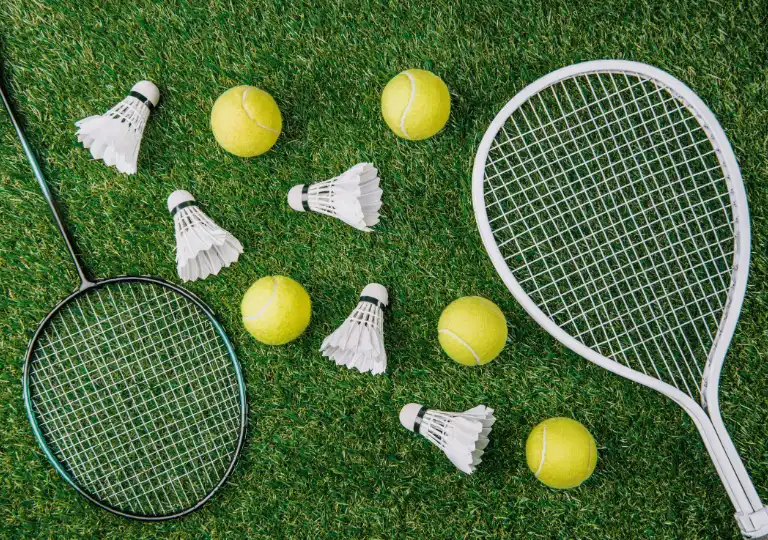
Exploring The Various Equipment Types For Tennis And Badminton
Badminton rackets are lighter, smaller, and have a longer shaft for flexibility than tennis rackets.
In tennis, the game revolves around a ball, whereas badminton employs a shuttlecock, typically made of feathers or synthetic plastic with a corked end.
While there are certain similarities between the shoes used in both sports, badminton trainers generally offer less cushioning and feature non-marking soles.
Tennis trainers, on the other hand, have more variability depending on the playing surface. However, for most courts and casual play, opting for shoes with a durable outer sole that provides adequate cushioning for maximum comfort is advisable.
Badminton Racket Vs Tennis Racket
Badminton Racket vs Tennis Racket play a vital role in their respective games. A tennis racket is essential for striking a tennis ball, while a badminton racket is used to hit a shuttlecock or birdie.
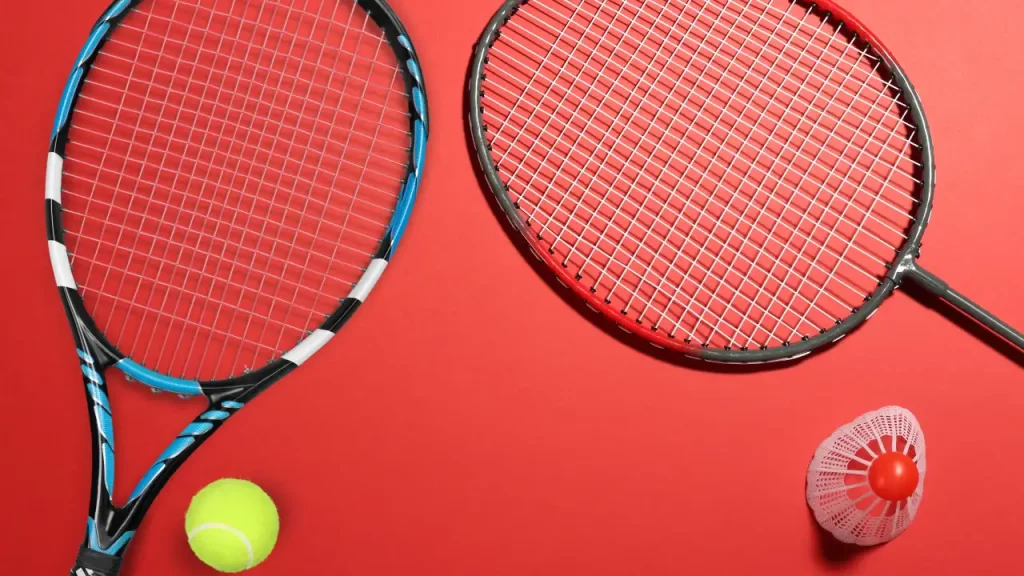
The most noticeable distinctions between these rackets are their design, size, and weight. These factors significantly impact the gameplay experience and techniques used in each sport.
Design And Pattern
When we compare a tennis racket and a badminton racket, their design differences become apparent. While they share a similar length, the tennis racket stands out with its thicker and broader frame, creating a noticeable visual contrast.
Regarding specific design features, the head of the tennis racket is larger, and the handle is thicker for better grip than its Badminton counterpart. This broader construction not only enhances durability but also suits the demands of the game.
On the other hand, the badminton racket showcases a thinner shaft, providing a different feel and manoeuvrability. Additionally, the throat sections of the rackets differ. The throat, which connects the head to the shaft, varies in design. It’s worth mentioning that while some badminton rackets include throats, they are not mandatory.
The string patterns on the rackets also diverge significantly. Badminton rackets feature smaller string patterns with minimal spacing between the strings. Moreover, the lines on badminton rackets are strung tighter to optimise performance in the sport.
These unique design elements cater to the specific requirements and playing styles of tennis and badminton, highlighting the importance of specialised equipment for each sport.
Difference Between Badminton And Tennis Racket
Badminton Racket Length
Badminton rackets come in various sizes to accommodate players‘ preferences. On average, the length of a badminton racket falls between 26.18 and 26.77 inches. The width of the racket head typically ranges from 8.66 to 9.06 inches.
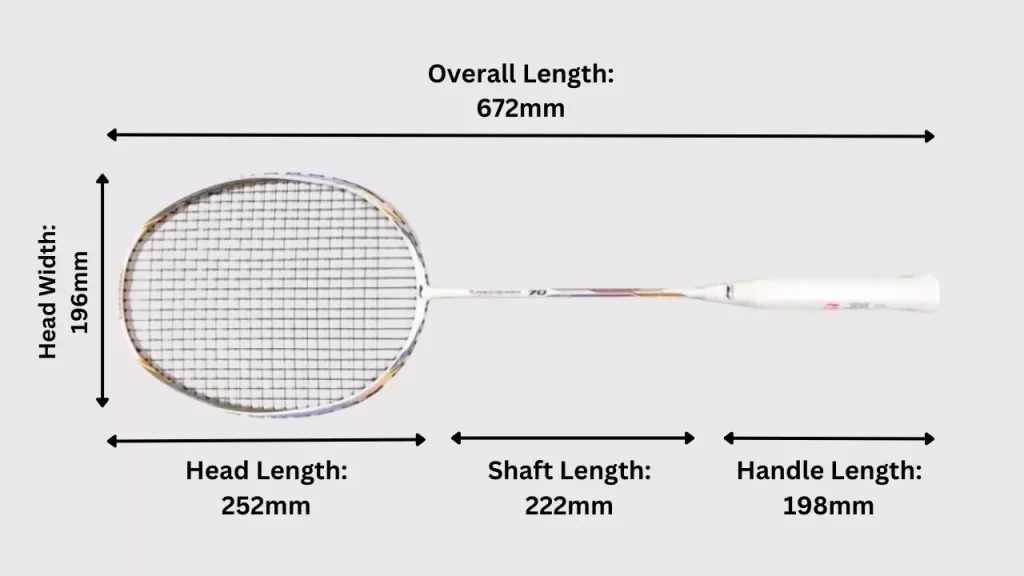
When it comes to kids’ rackets, they are generally shorter, measuring around 22.8 inches in length. The maximum allowable length for a badminton racket is 26.77 inches or 680mm, ensuring a standard limit for competitive play.
Tennis Racket Length
Tennis rackets come in various sizes and grip options to suit different players’ needs. For adults, the average length of a tennis racket ranges from 26 to 27 inches, but lengths can vary between 19 and 29 inches. In contrast, kids’ rackets are notably shorter in length. The maximum overall width of a tennis racket typically reaches 12.5 inches, while the hitting surface, or the stringed area, measures around 15.5 inches in length and 11.5 inches in width.
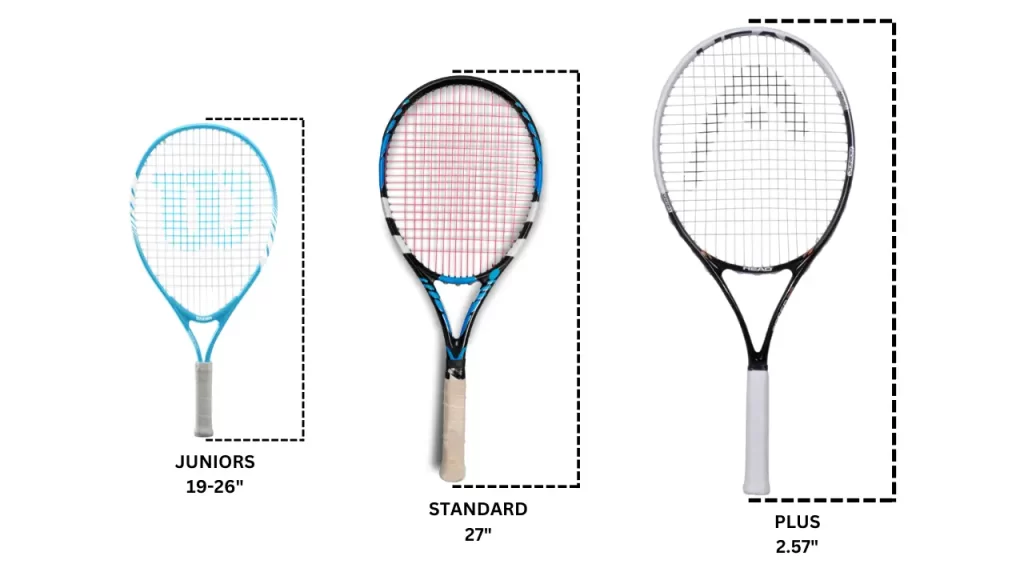
With the variety of sizes available in both tennis and badminton rackets, players can find the right fit to suit their playing style and individual preferences, enhancing their overall performance on the court.
Weight – Badminton Racket vs Tennis Racket
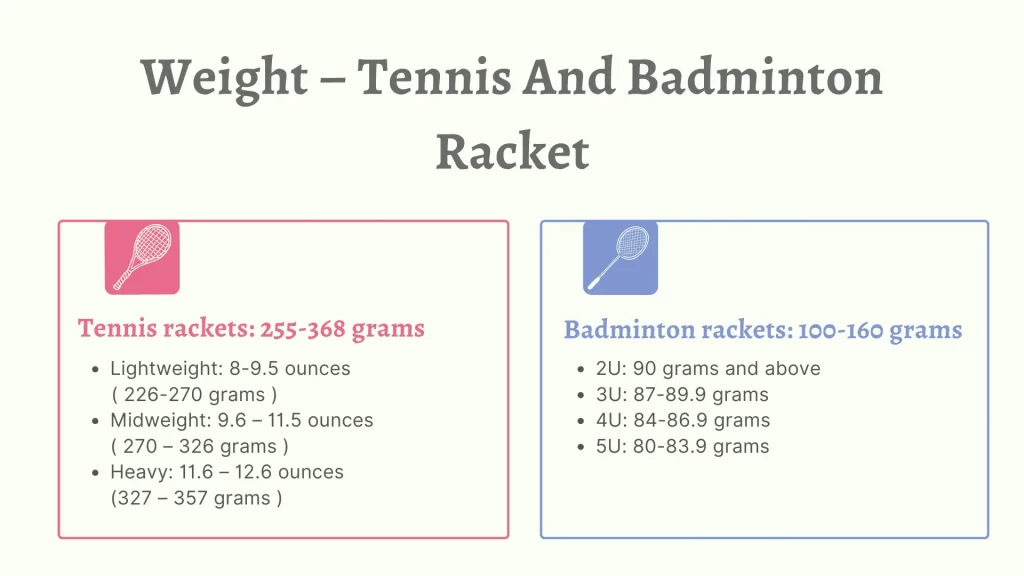
There is a significant weight differential between badminton and tennis rackets. Badminton rackets are often lighter than tennis rackets, in contrast. The reason behind this discrepancy lies in the characteristics of the balls used in each sport.
Tennis balls are heavier and harder than shuttlecocks in badminton. This means that more power is required to strike a tennis ball effectively. Tennis rackets are made with larger heads to accommodate this, which increases mass distribution over a larger area and adds to the racket’s weight as a whole.
A racket’s weight greatly impacts how it feels and performs while being used to play the game. Lighter rackets are easier to swing, allowing for faster manoeuvrability on the court. They might produce less power, though, as heavier rackets. Conversely, heavier rackets are noted for their strength but might be more difficult to control properly.
Can We Play Badminton With Tennis Rackets?
You can play badminton with a tennis racket, but better options may exist. Tennis rackets are heavier and have a larger head size, which can affect speed and control.
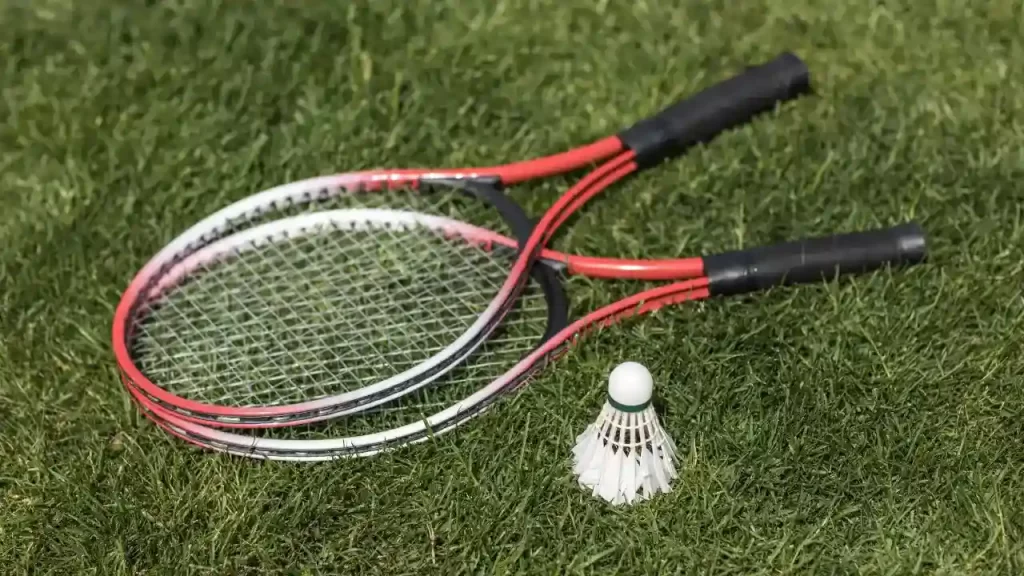
Badminton requires quick wrist movements and precise control, which may be more challenging with a tennis racket. The lightweight shuttlecock may also be harder to hit accurately with a tennis racket. Using a proper badminton racket is recommended for optimal performance and enjoyment.
What Materials Are Used In Making The Tennis And Badminton Reckets?
Tennis and badminton rackets are made of lightweight graphite or carbon fibre composites for the frame, providing strength and manoeuvrability. Synthetic materials like nylon or polyester are commonly used for the strings, offering durability and spin potential.
Grips are typically made of synthetic materials such as polyurethane or rubber, providing cushioning and grip. These materials are chosen to enhance player performance, durability, and comfort. Racket technology continues to evolve, introducing new materials and design elements to improve gameplay further.
Is Tennis Better Than Badminton
Deciding whether tennis is better than badminton is subjective and depends on personal preferences. Each sport has its distinct qualities that appeal to different individuals.
Tennis offers a dynamic, fast-paced game with powerful shots, longer matches, and a larger playing area. It demands a combination of physical strength, endurance, and strategic thinking. Tennis players often enjoy the thrill of intense rallies and the opportunity to showcase their athleticism.
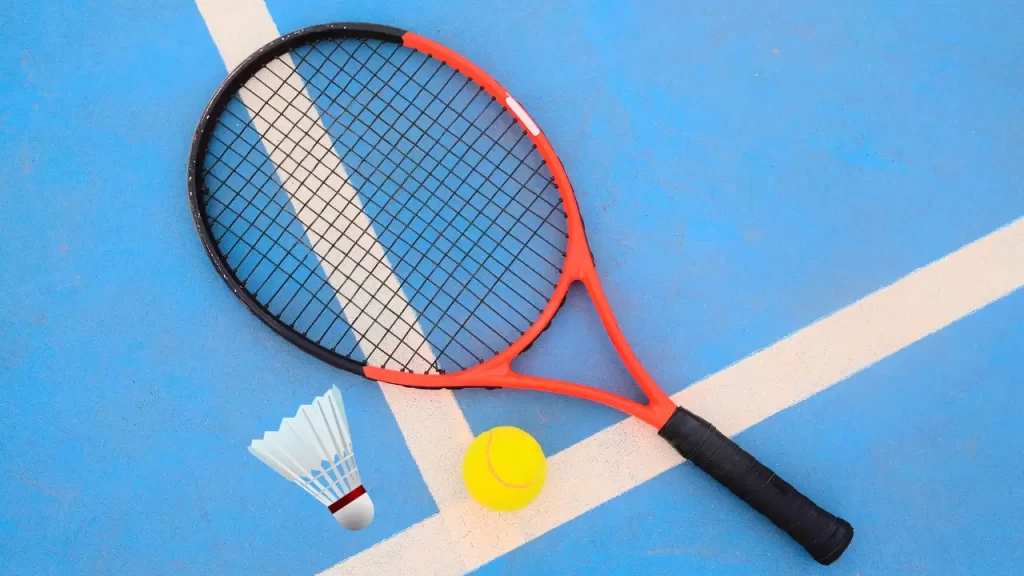
On the other hand, badminton offers a unique and fast-paced experience. With its smaller court, lighter rackets, and shuttlecocks that require delicate control, badminton emphasises agility, quick reflexes, and precision. Players enjoy fast-paced rallies, strategic shot placement, and the ability to execute swift movements to outmanoeuvre their opponents.
Determining which sport is better is a matter of personal preference. Some may prefer the power and competitiveness of tennis, while others may appreciate the finesse and agility demanded by badminton. Ultimately, both sports provide enjoyable opportunities for exercise, competition, and skill development, catering to different interests and playing styles.
Conclusion
Badminton and tennis have distinct characteristics that set them apart. Tennis utilises a ball, while badminton uses a shuttlecock. The gameplay dynamics and equipment, including rackets and shoes, differ between the two sports. Both sports offer flexibility in terms of competition formats.
Badminton rackets are lighter and have a longer shaft compared to tennis rackets. The weight, design, and string patterns of the rackets vary significantly. Playing badminton with a tennis racket is possible, but it could be better. The materials used in making the rackets include lightweight graphite or carbon fibre composites for the frame.
Deciding which sport is better is subjective and depends on personal preferences. Both sports provide enjoyable opportunities for exercise, competition, and skill development.


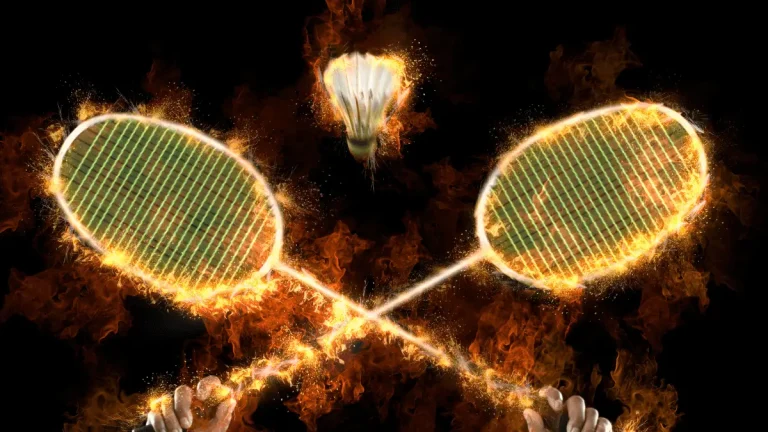

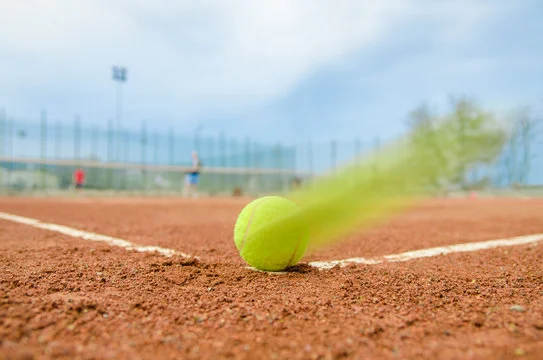
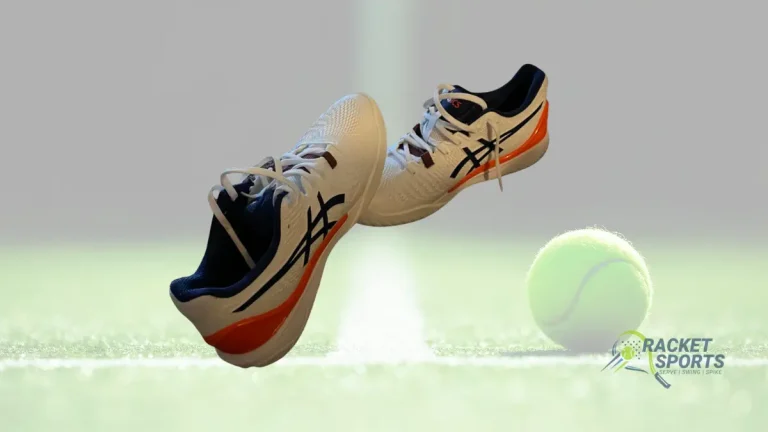
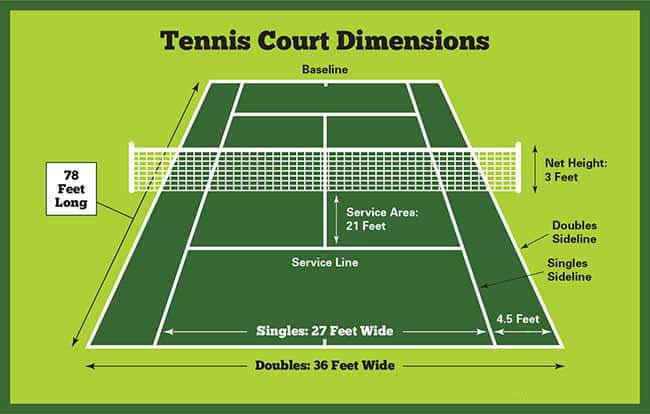

Great analysis! I never realized how different the designs of badminton and tennis rackets really are. Your insights on how those differences affect gameplay were super helpful. I’m definitely going to pay more attention to racket choice next time I play!